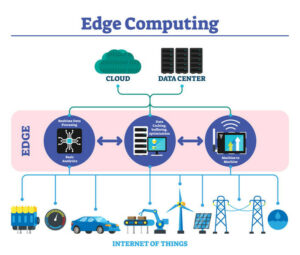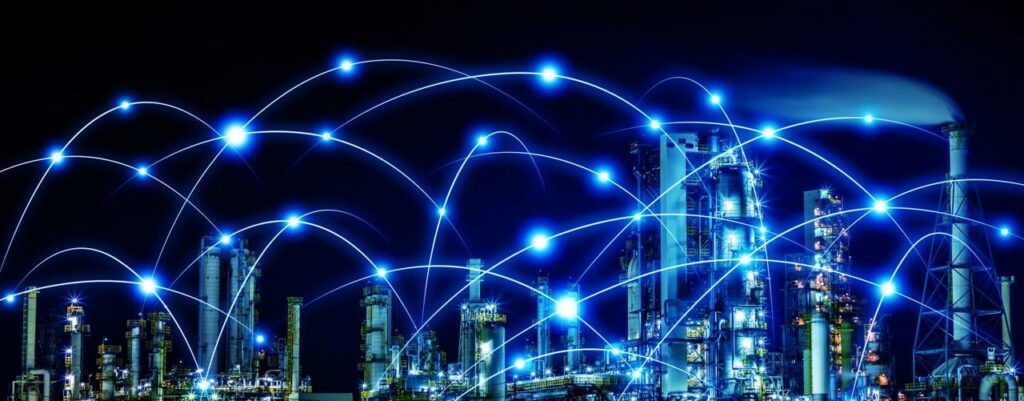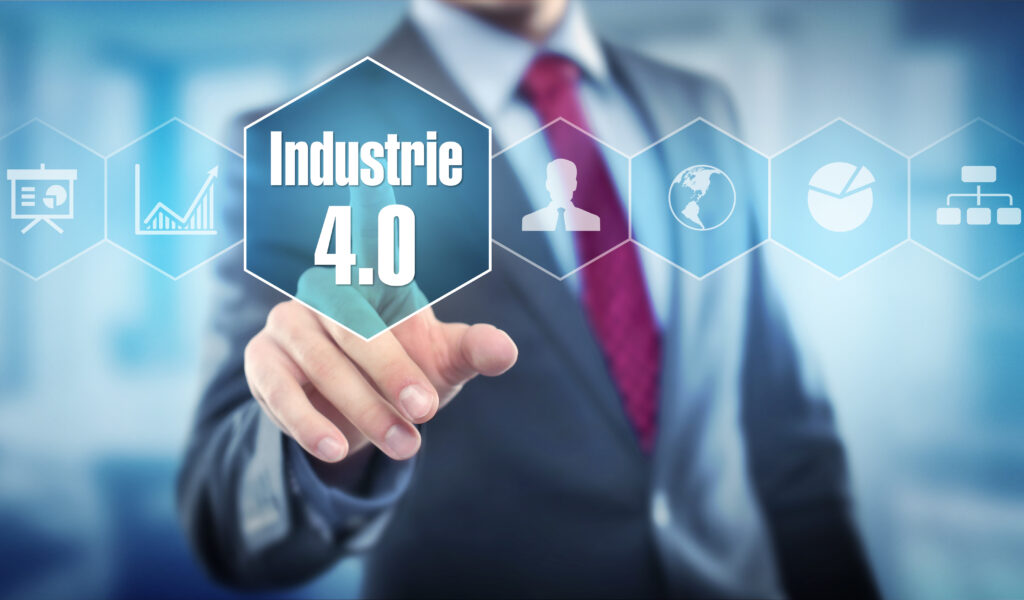In connection with IIoT or data analysis, the terms cloud and edge computing keep coming up. While most people are familiar with the term cloud at the latest through various services from Google or Amazon, edge computing is a rather unknown field. Nevertheless, it can be partly heard that edge computing will be the new cloud computing. Is this true? Let’s take a quick look at both for now.
Cloud Computing and Edge Computing in a Nutshell
The cloud is an IT infrastructure that does not have to be installed locally but is available via the Internet, for example. The cloud provider offers various services such as storage space or application software for rent. The advantage is obvious: the end user no longer has to worry about sufficient storage space, license costs or computing systems where he would have to take care of maintenance, which can be extremely costly.
In edge computing, data is processed directly at the point of origin, i.e. decentrally at the edge of the network – hence the term “edge”. Let’s take a look at an example to see what this means in comparison to the cloud.
Example Cavitation Detection
Take Yokogawa’s cavitation detection. Cavitation can cause severe damage to pumps and valves by implosion of vapor bubbles that form in liquids under certain conditions. To prevent this, it is important to detect the formation of bubbles as early as possible. Yokogawa‘s solution relies on the evaluation of subtle changes in pressure variations caused by the implosion of bubbles. In order for these pressure fluctuations to be visible at all, however, and thus to be evaluated, the measured values must be recorded with a very high resolution. In this case every 100 ms. In addition, several internal parameters of the differential pressure meter used must be evaluated. That’s where a little bit comes together.
Quick “at the Edge”
If one wanted to perform the necessary calculations in the cloud, this would mean a not inconsiderable data transfer. And a rather unnecessary one at that. After all, all that matters is the result – a measure of the level of pressure fluctuations and an alarm in the event of critical values. In such a case, it therefore makes much more sense to evaluate the data directly on site. In the above example, the differential pressure gauge is connected to a controller that calculates the level of pressure fluctuations. Based on the level of pressure fluctuations in normal conditions, it also determines threshold values for critical levels of incipient and severe cavitation. If the pressure fluctuations exceed the threshold values, a reaction can be carried out without delay, for example by directly switching off critical equipment. In other words, there is no latency in data transmission, as occurs with cloud computing. Edge computing is therefore certainly the more suitable approach in this case.
Overview in the Cloud
When it comes to maintenance tasks and a good overview of the condition of the equipment, it naturally makes sense to know where the cavitation occurs. But also where equipment is at the abrasion limit or a defect is imminent. In this case, a maintenance engineer needs the data of various plant components as well as various parameters in order to be able to plan specifically in which area action is required. Here, too, algorithms can help him, for example, those that determine the service life of equipment on the basis of data, keyword predictive maintenance. However, these are not necessarily time-critical considerations that require the fastest possible response. But the merging and joint processing of data from different sources. And this is where cloud computing is clearly ahead of the game.
So Edge Computing is not the new Cloud Computing after all?
In contrast to edge computing, cloud computing is, therefore, more suitable for non-time-critical actions and evaluations in order to obtain a more comprehensive view of several data sources. It cannot provide the real-time services of edge computing because latency is created from the device to the cloud. Edge Computing, on the other hand, impresses with its speed and location close to the individual device. Its use is appropriate for time-critical operations, i.e. where real-time decisions are required, such as detecting anomalies. But also where no connectivity to the computer network is available or no complete transfer of data to a cloud is necessary or desired.
Cloud and edge computing are thus two different areas of application that exist alongside – but also with – each other and both have their right to exist. One will therefore not replace or substitute the other. However, edge computing is expected to see the biggest developments in the near future, as it is not yet as developed as cloud computing. So in terms of hype, it may well be that edge computing will become the new cloud computing.





